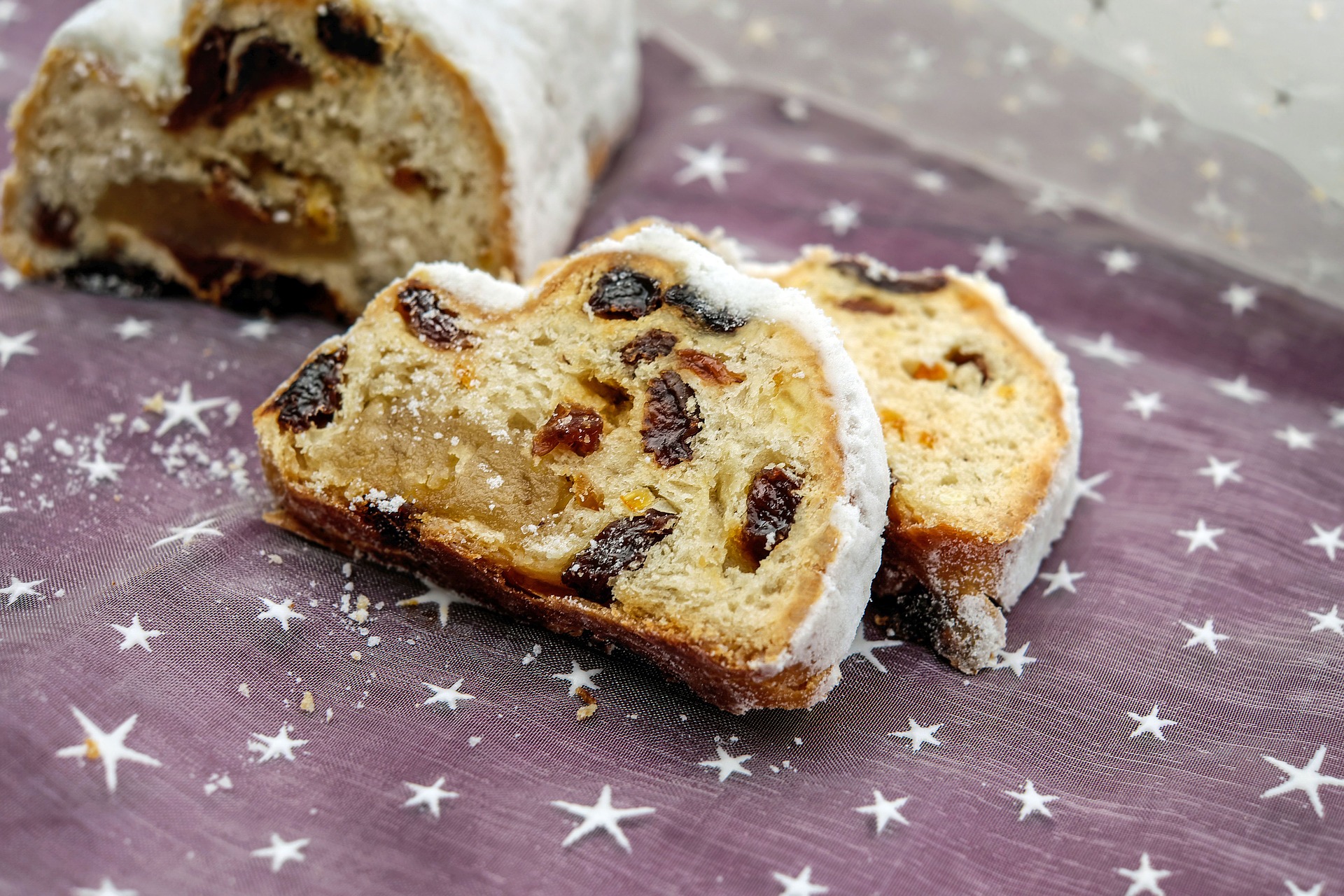Stollen, the German fruit bread dusted with powdered sugar, is more than just a festive treat; it’s a slice of history wrapped in rich traditions and symbolism.
Originating in the 14th century, this beloved Christmas staple has undergone centuries of transformation, reflecting the cultural and religious influences of its time.
The story of stollen begins in medieval Saxony, in what is now modern-day Germany. Known then as ‘Christstollen’, it was created as a Christmas bread to honour the holiday’s religious significance. Early stollen recipes were simple and austere, in keeping with the fasting traditions of Advent. Made with flour, oats and water, it was a far cry from the rich and sweet loaves we enjoy today.
This changed in 1491, when the ‘Butter Letter’ (Butterbrief) was issued by Pope Innocent VIII. The letter granted Saxony’s bakers permission to use butter during Advent, provided they paid a fine to support the construction of a church. This decree allowed stollen to evolve into a more flavourful and indulgent bread, gradually incorporating ingredients like dried fruits, nuts and spices, reflecting the growing prosperity of the region.
Stollen’s distinctive shape is not accidental. It was designed to resemble the Christ child wrapped in swaddling clothes, with the white powdered sugar symbolising purity.
As stollen’s reputation grew, so did its variations. Regional recipes emerged, reflecting local tastes and available ingredients. Some stollen are studded with marzipan, creating a sweet almond centre, while others include rum-soaked raisins for added richness. Poppy seeds, candied citrus and spices like cardamom and cinnamon also make appearances in different versions. These local adaptations helped stollen gain a foothold not only in Germany but across Europe.
Today, stollen is enjoyed worldwide. Artisanal bakers and home cooks alike continue to uphold traditional recipes, while modern innovations add a contemporary twist. Vegan stollen, gluten-free versions, and chocolate-infused loaves cater to evolving palates, ensuring that this historic bread remains relevant.
Despite these innovations, stollen’s roots in German culture remain strong. For many, the process of baking or sharing stollen during the festive season is as important as the bread itself, a ritual that connects them to their heritage and the spirit of Christmas.







Click here to change your cookie preferences